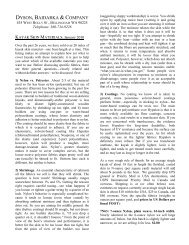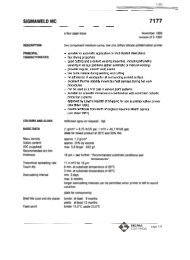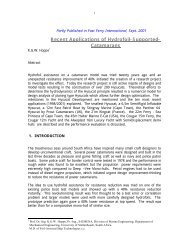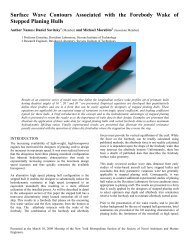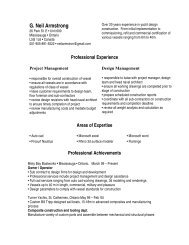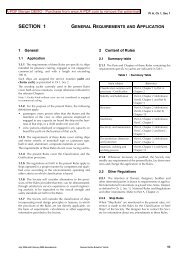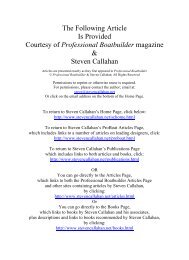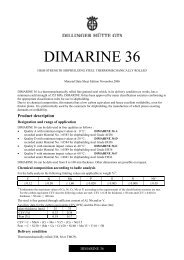3 Bow Bimini Boat Top Instructions - Boat Design Net
3 Bow Bimini Boat Top Instructions - Boat Design Net
3 Bow Bimini Boat Top Instructions - Boat Design Net
Create successful ePaper yourself
Turn your PDF publications into a flip-book with our unique Google optimized e-Paper software.
Duplicate each tail. The tails will be doubledto stiffen them. Figure 12 shows all the piecesyou should have at this stage.Sewing the <strong>Bimini</strong>Join the panels that will make up thecover together with a blind or "semi-flat feld"seam (Figure 13). This seam is not so waterproofas a flat feld one, but these seams willrun right over the bows so there will be notendency for water to pool over them. Do yoursewing with a row of the longest possiblestraight stitches.The semi-flat feld seam is formed bylaying the fabric "topside" to "topside" withtheir edges flush and running a straight stitchjust 1/2-inch inside those flush edges. Thenthe top panel is folded out and the 1/2-inchseam allowance is folded back against one orthe other side where it is secured in place witha "topstitch" a row of straight stitches 1/4-inchor so from the fold in the joined pieces.Joining these pieces will often requireforcing a curve that goes one way back over acurve that goes the other way. Accuracy isvery important so we suggest that doublesided basting tape be used whenever possible.It may also be helpful to have a staplerhandy to provide extra strength at crucialplaces — just be sure to remove the stapleswhen sewing is complete. Just in case thebasting does not hold, it is a good idea to startall sewing from the center of seams and workout to the edge of the assembly first one waythen the other. If there is any inaccuracy withthis procedure it will be limited to just half ofthe seam.First sew together the "primary panels"that make up the bimini. After sewing thesepanels together they will no longer lay flat onthe floor because of the shape imparted bythe seam (or seams in the case of 4 bowbiminis).Next turn to the sleeves. Place a 1/2-inchhem along the inner edges of both sleeves.Fold the hem toward the inside surface of thesleeves so they will be underneath when thesleeves are attached. These hems willtraverse curves which may make relief cuts inthose curved sections necessary to keepthem flat. After the hem is sewn, cover theshort length across the ends of the sleeveswith binding tape to prevent raveling.Secure two finished zippers to eachsleeve along their inner and "inside" edges(Figure 14) so the zipper tapes will be insidethe sleeve when it is secured to the undersideof the top We like to use two zippers so thecover can be zipped in place starting from thecenter and working outward toward each side.If they are too long simply cut the excess fromthe end that is last to close. Cut three or fourteeth from the waste. Insert this short segmentbetween the final few teeth. Then meltthese teeth together to form an effective stopfor the slider. Do this for both sides of the8



